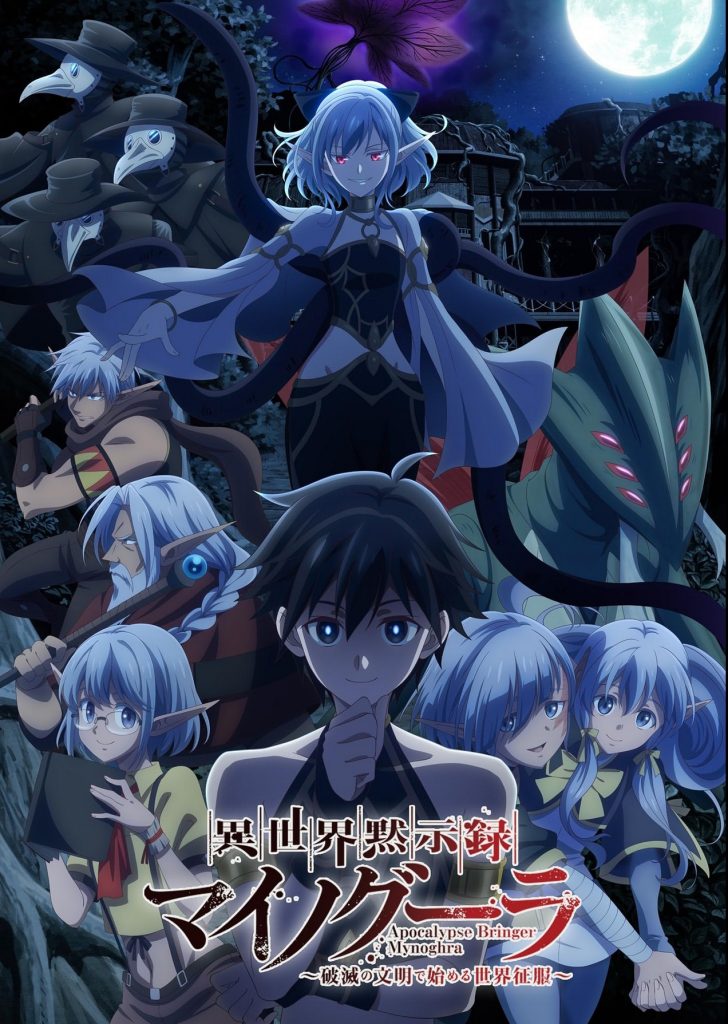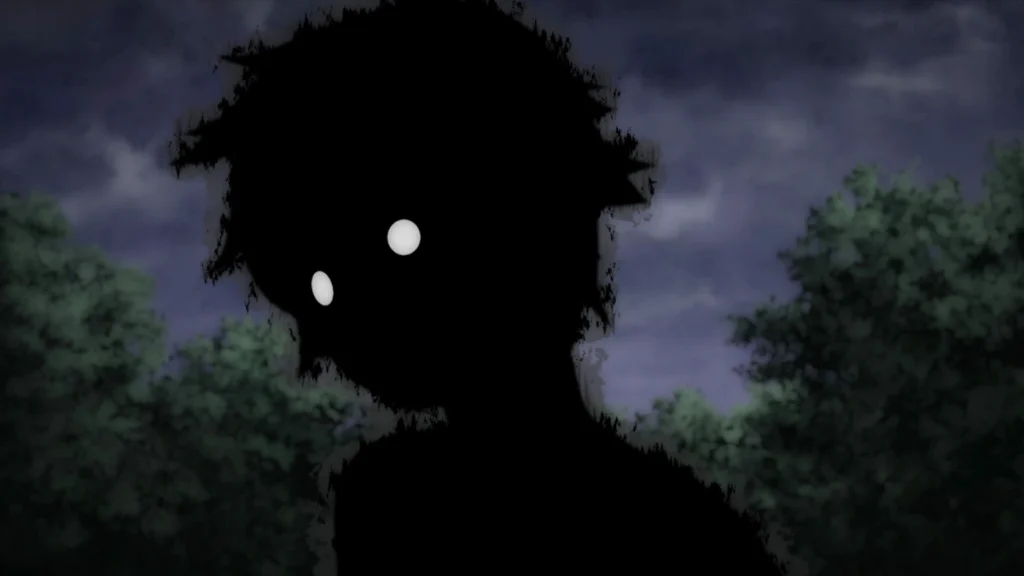I’ve made my feelings clear that most isekai anime are trash. Apocalypse Bringer Mynoghra reinforces this conviction with painful clarity. Allow me to issue a fair warning upfront: this review contains more spoilers than I typically include, as the anime’s numerous flaws require detailed examination.

Promotional Still for Apocalypse Bringer Mynoghra © Fehu Kazuno,Jun,MICRO MAGAZINE/MYNOGHRA Project. North American License Holder: Crunchyroll. Used for editorial purposes.
What Is Apocalypse Bringer Mynoghra About?
Here’s the synopsis provided by Crunchyroll:
“In Eternal Nations, a fantasy strategy game where players manage an empire, Takuto Ira is a legendary player who sits atop the leaderboard. Takuto goes unconscious during a hospitalization and awakens on the continent of Idoragya, which looks just like the game. Takuto meets Sludge Atou, his favorite unit in the game, and decides to build Mynoghra, an evil empire, in this isekai apocalypse anime.”
Major Issues That Plague This Anime
Gaming Knowledge Creates a Barrier to Entry
First, you need to be a dedicated gamer to fully appreciate this anime. The story heavily explores various game mechanics and their impact on the on-screen action. I acknowledge there’s a generational gap here—my gaming experience dates back to the era of side-scrolling games. Perhaps if I had a more comprehensive knowledge of modern strategy games, I could have developed a greater appreciation for the anime. However, accessibility shouldn’t require a PhD in gaming.
Confusing Plot Elements and Poor Worldbuilding
This anime suffers from several confusing elements that extend far beyond its game mechanics. The most glaring example occurs in the final episode, where there’s an abrupt mention of God. Multiple characters suddenly reference conversations or missions from this off-screen deity, yet it appears that more than one God is being referenced despite all mentions being singular.
Considering the implication that multiple players compete for control of this world, these characters might be confusing players with gods. Nevertheless, Takuto Ira appears in the story without any divine agency—he’s simply a sick individual in the hospital who seems to have died and been reincarnated into the world of his favorite game.
Another inexplicable element: why can’t the dark elves who become Takuto Ira’s subjects see his true form? Only his preferred game unit, Sludge Atou, can recognize him properly. To everyone else, Takuto appears as a blurry black silhouette with a distorted voice. The anime does not explain this phenomenon, though it might signify Takuto’s association with evil within this game world.

Screenshot from Apocalypse Bringer Mynoghra © Fehu Kazuno,Jun,MICRO MAGAZINE/MYNOGHRA Project. North American License Holder: Crunchyroll. Used for editorial purposes.
Problematic Moral Messaging
I strongly disliked the moral inversion present throughout the series. As mentioned, Takuto Ira aligns himself with evil in this game world. He tells two young girls he’s taken under his wing that evil is superior to good because it offers freedom. Initially, he explains that being evil means they can choose to live peacefully with others.
However, this philosophy crumbles when his domain is invaded and he dispatches his military to establish an alliance with a nearby settlement. This alliance forms when he sends his hero, Sludge Atou, to defeat monsters threatening the settlement. Following these events, bloody reprisals and wanton death become acceptable—in other words, they act exactly as one expects of those who embrace evil.
While this might be entertaining when playing a video game, it sends a troubling message to viewers, particularly younger audiences whose prefrontal cortex is still developing. Research shows that violent games can actually reduce activity in brain regions associated with cognitive inhibition and empathy.
Excessive Trauma as Plot Device
The anime employs tragedy as a crude tool to evoke sympathy for certain characters. The two young girls Takuto takes under his wing have experienced multiple traumas that have warped their personalities in disturbing ways.
These girls lost their mother to starvation when the dark elves fled due to persecution by the game world’s inhabitants. To survive, the dark elves resorted to cannibalizing the girls’ mother—already a horrifically heavy detail that the story refuses to treat with appropriate gravity.
But the trauma doesn’t end there. Takuto’s second summoned hero—a creature resembling a giant praying mantis named Isla—becomes the children’s adopted mother. She proves very nurturing toward the girls until a sudden confrontation with another player results in the girls being transported to the battlefield where Isla fights an invader. Isla dies protecting them, but gives them her magical heart—an object they must consume. This means they end up cannibalizing a second mother figure.
The girls predictably go insane, destroying everything in their path and even threatening their ally, Sludge Atou, when she tells them the king has ordered their return. Only after Atou’s rebuke do they regain their senses and return home. This feels exploitative rather than meaningful storytelling.
Technical Aspects Fall Short
Beyond the narrative problems, Apocalypse Bringer Mynoghra fails on technical merits as well. The animation quality lacks polish and fails to impress, while the musical score proves entirely forgettable. These technical shortcomings only compound the story’s fundamental issues.
Final Verdict
This anime is a hot mess, and not in any positive sense. It’s possible this represents a poor adaptation of Fefu Kazano’s original light novel series—I haven’t read the source material, so I cannot compare. The issue might stem from localization problems, but as it currently stands, the anime adaptation has failed spectacularly.
Rating: 3 out of 5 stars
Interestingly, this rating contrasts sharply with 80% of the 23,600 reviewers on Crunchyroll, who awarded it a perfect 5-star rating. This disconnect suggests either vastly different expectations or a concerning lack of critical viewing among the anime community.
Content Advisory for Parents
For parents and grandparents considering this for younger viewers: Apocalypse Bringer Mynoghra carries a 16+ rating for blood/gore, profanity, and violence. This represents one of the rare instances where a streaming service’s content advisory accurately reflects the material’s disturbing content.
What are your thoughts on isekai anime that rely heavily on gaming mechanics? Have you encountered similar issues with adaptations that assume extensive genre knowledge? Share your experiences in the comments below.
Your friendly old otaku at Old Otaku’s Notebook